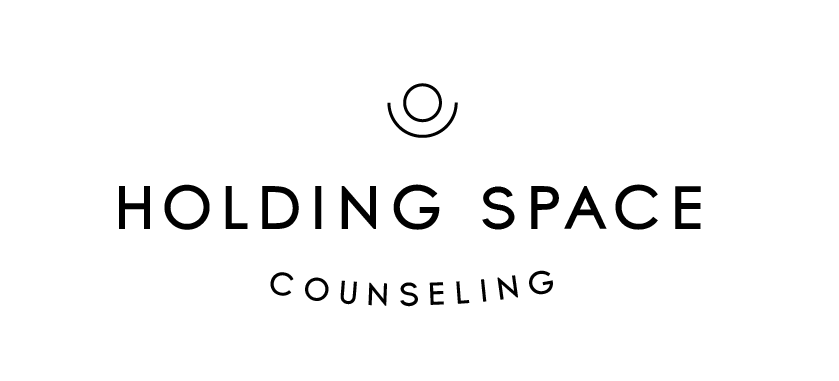Let's Talk About the Mind-Body Connection
Editor’s Note: The following blog is by Holding Space Counseling therapist, Brooke Urich, LPC-MHSP (t). She is currently accepting new clients. You can learn more about Brooke and read her bio right here.
____
You, my friend, are an incredible, complex being. Often when we look at who we are, and our state of being, we tend to divide ourselves into different “parts.” Physical, emotional, spiritual, mental… we look at our health in each of these categories. At times it’s as if we fragment “self” into different compartments. However, the more clients I am honored to sit with, and the more I pursue health in my own life, the more I am amazed at how interconnected these “pieces” are.
I spent about eighteen years of my life struggling off and on with chronic health issues. Doctors and tests couldn’t give me any answers. I lived five years on a modified diet that definitely helped, but I still rarely felt my best.
I remember a day in 2013 when a colleague of mine said to me, “Have you ever considered how your emotional health could be affecting your physical symptoms?”
I remember having such a visceral reaction to her question: No! The pain I was experiencing wasn’t in my head! It was real. At times it was excruciating and debilitating. With tangible, actual, physical symptoms.
If I had been ready to hear those words, years of my life may have been different. It wasn’t until several years later when I was ready to start doing more deep, intentional work on the trauma of my past, that the question from my incredibly insightful counselor friend started to click into place. Have you ever considered how your emotional health could be affecting your physical symptoms?
As I revisited my trauma and faced it head on with the help of a trusted counselor, a wild shift began to happen. Slowly, subtly, my symptoms began to subside. The more I connected with myself and allowed the integration and expression of inward pain, the healthier I became physically, spiritually, mentally, and emotionally.
My energy increased and the pain dissipated. I began craving the foods that I had tossed aside for nearly half a decade out of fear that they were breaking down my body. I was also able to reincorporate those foods without the dire consequences I had experienced for the majority of my life. Most importantly, I found joy, wholeness, and relief from some of the anxiety and the weight of my past. In a lot of ways, it felt as if my life had just begun.
You may not suffer from chronic pain and illness, but are you fully aware of how all parts of your body are connected? Today I want to share a few ways that you can tap into this connection to strengthen the integration of your mind and body.
1. Breathe
In the never-ending busyness of life, we can often find ourselves rushing from one thing to the next, each day ending seemingly as soon as it began. A simple, gentle way to care for both the mind and body is to spend just a few moments centered on our breath. Quieting our body and giving it the space it needs to relax, often helps our mind to quiet as well.
Try this:
Find a comfortable, quiet place. Sit with your feet flat on the floor. Close your eyes and breathe in through your nose and out through your mouth. Draw awareness to the way the air is entering your body, inflating your lungs. Then notice how it feels as it leaves your body.
Breathe in through your nose for a count of four. Hold your breath there for a count of four. Then release your breath for another count of four.
As you breathe in and out, begin focusing all of your energy into flexing and then relaxing different muscles in your body. Begin with your toes. As you draw your breath in, focus your attention on your toes. Draw them inward towards the balls of your feet. Imagine all tension, stress, and worry being carried in the muscles of your toes. Hold for a breath in, a breath out, and another breath in. As you release your breath relax the muscles of your toes. Allowing them to melt into the floor. Continue this pattern of tension and release from your toes all of the way to the top of your head. When you have a thought, or get distracted, allow it to become part of the tension.
2. “Feel” Your Emotions
Have you ever experienced a nagging headache, the mad dash to the bathroom before a big presentation, or tension in your shoulders during a marathon workday? Or perhaps you’ve experienced the feeling that your heart might beat out of your chest when you think about your to-do list.
These experiences illustrated the strong connection between our body and our mind. At times we can point out the cause (like that important work meeting), but at other times the culprit can be a little bit more ambiguous. A great way to tune into emotions and find the connection is to start being more curious about what is happening in your body from day to day.
Try this:
Start taking inventory of your emotions. You may do this by taking some time to reflect at the end of your day, or by becoming more aware of times when emotions are heightened in the moment.
- What are you feeling? If you need some help identifying emotions, a simple emotion wheel can be really helpful. Type that phrase into Google and you’ll find a lot of different options.
- What sensations are you experiencing in your body? Where do you feel them?
- Do you feel the flush in your face when you are experiencing anxiousness?
- Are you feeling sensations in your head? Your gut? Are your shoulders tense?
This connection may begin with you identifying emotions, or it may begin with identifying what you felt in your body throughout the day. Often we find ourselves with more awareness about one than the other. Maybe you’ve had that nagging pain in your shoulders all day, but it isn’t until you stop and think about the day that you are able to identify the moments of feeling overwhelmed, exasperated, frustrated, etc.
Naming our emotions and acknowledging their presence in our body is a powerful first step in being able to understand the root causes that may bring those emotions to the surface.
3. Move Your Body
This one is simple but extremely important and more effective than we give credit. Even taking a simple walk around the block is an amazing way to connect your body with your mind. Studies have shown that cross-lateral movements (activities like swimming, crawling, and walking) help to integrate the two hemispheres of your brain.
Try this:
Take a walk with no distractions. Just you, your sneakers, and the sidewalk. Try to breathe intentionally as you walk while you also pay attention to your thoughts. What are you focusing on and how are you feeling?
You may even choose to focus on some intentional thoughts as you walk.
- What are some characteristics of myself that I am proud of?
- Think about a current issue you are facing. Allow yourself to think through it as you move your feet left and right. Science has shown that these left-right movements help your whole brain to be onboard – logic and emotion, and can do wonders for your problem-solving skills.
- What are some things about myself that I would like to work on?
- How can I show myself and others grace today?
You, my friend, are a complex being. Remember that. Although you are complex, you were not created to be fragmented or scattered. When we forget that our mind, body, emotions, and spirit act in tandem, we can become confused or frustrated when things are seemingly off-centered or disjointed.
Integration is the key. Connecting both our mind and body is what helps us to thrive in every area of our life, and integration of both aspects of ourselves can give us the strength to face everything that life has to offer—both the challenges and the victories.


